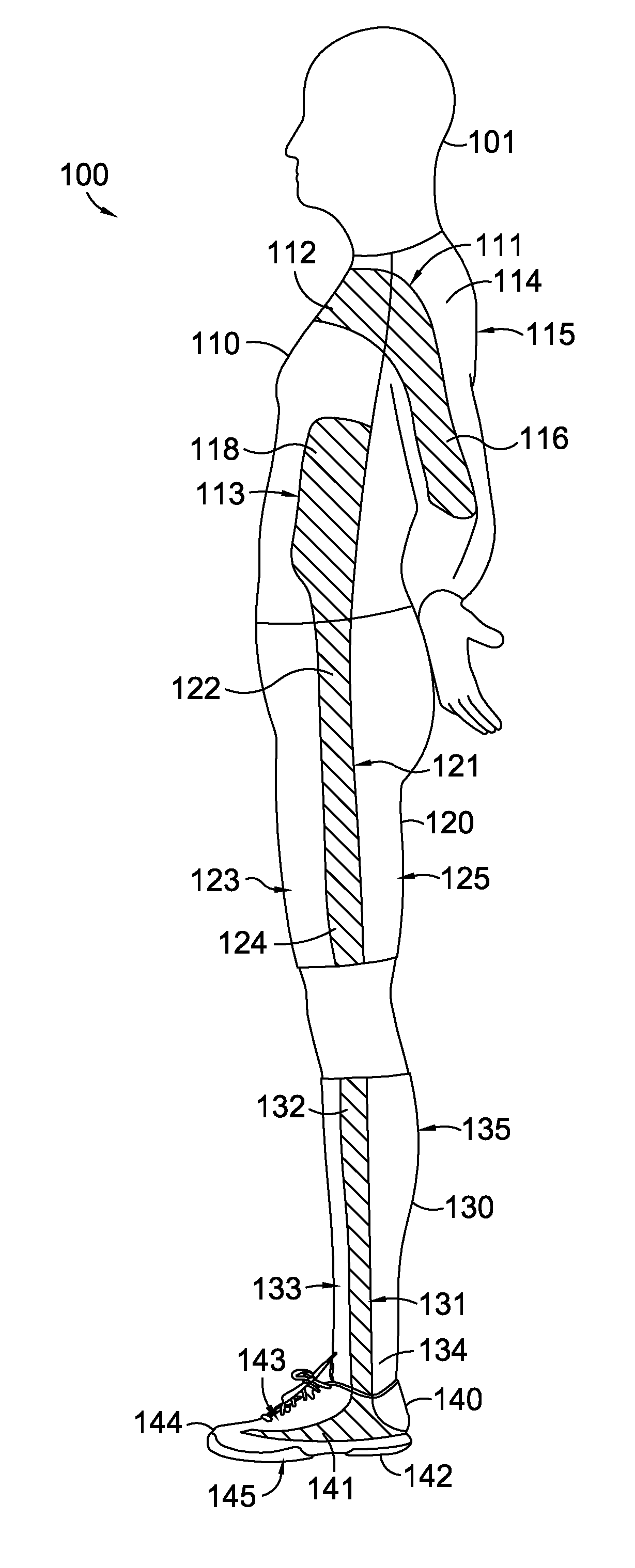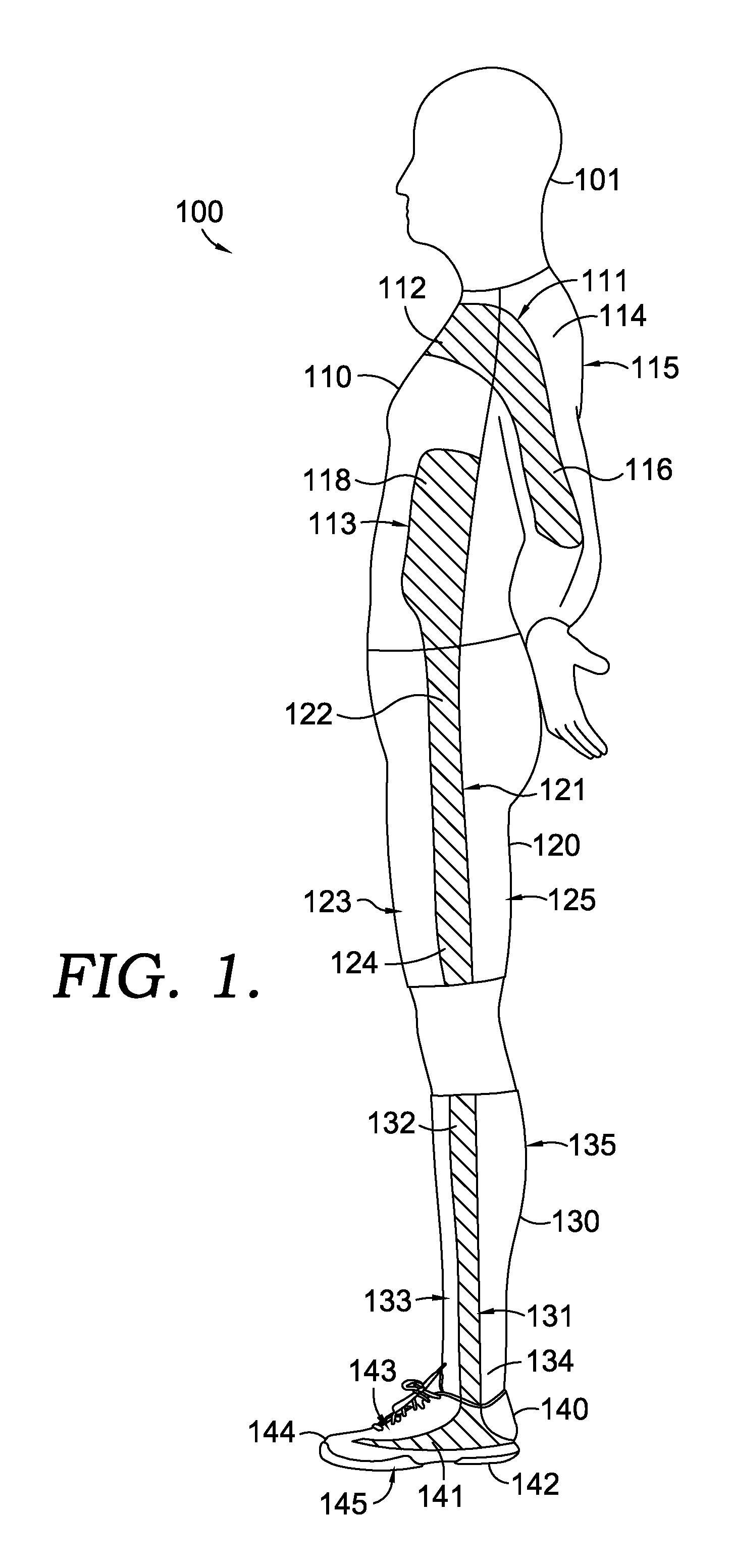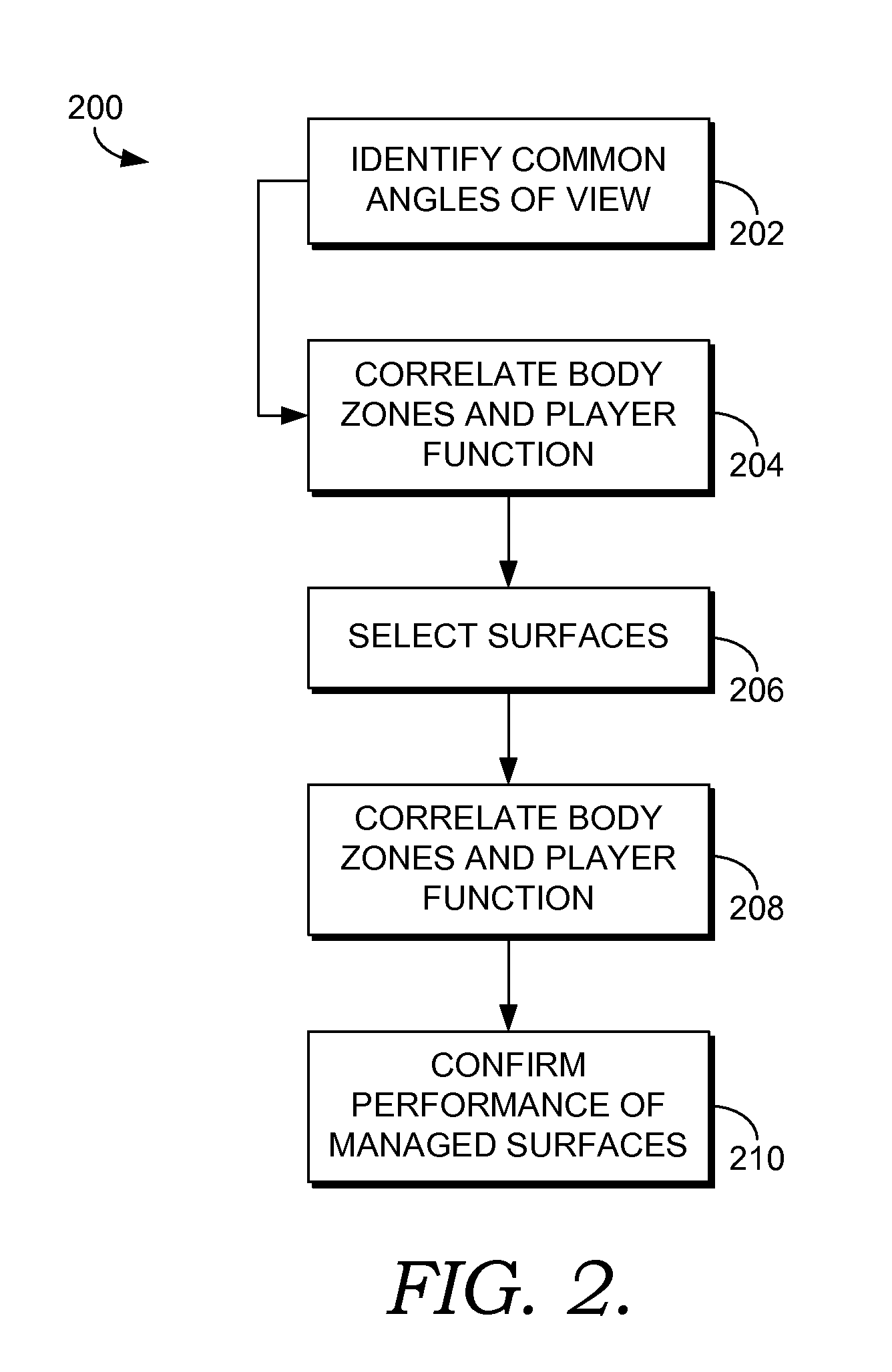Sports garments with enhanced visual and/or moisture management properties
a technology of visual and/or moisture management and sportswear, applied in the field of sportswear, can solve problems such as flickering effect while the wearer is running, and achieve the effect of enhancing visibility
- Summary
- Abstract
- Description
- Claims
- Application Information
AI Technical Summary
Benefits of technology
Problems solved by technology
Method used
Image
Examples
Embodiment Construction
[0032]A garment in accordance with the present invention may be a garment, a sports uniform or any sports uniform component. The term “garment” is used herein to refer to anything worn during athletic competition, such as jerseys, shirts, shorts, pants, socks, shoes, safety equipment, sweat bands, etc.
[0033]A garment in accordance with the present invention may advantageously create visual contrast to facilitate recognition of the wearer by his or her teammates or others during competition or training. The visual contrast created by a garment in accordance with the present invention may be between different zones on the garment itself and / or between the garment and the visual background experienced by teammates of the wearer during athletic competition. Visibility zones may be located on a garment or uniform to be particularly visible to teammates and / or to provide particularly useful information to teammates. The visual properties that create contrast for a garment created in accor...
PUM
 Login to View More
Login to View More Abstract
Description
Claims
Application Information
 Login to View More
Login to View More - R&D
- Intellectual Property
- Life Sciences
- Materials
- Tech Scout
- Unparalleled Data Quality
- Higher Quality Content
- 60% Fewer Hallucinations
Browse by: Latest US Patents, China's latest patents, Technical Efficacy Thesaurus, Application Domain, Technology Topic, Popular Technical Reports.
© 2025 PatSnap. All rights reserved.Legal|Privacy policy|Modern Slavery Act Transparency Statement|Sitemap|About US| Contact US: help@patsnap.com



